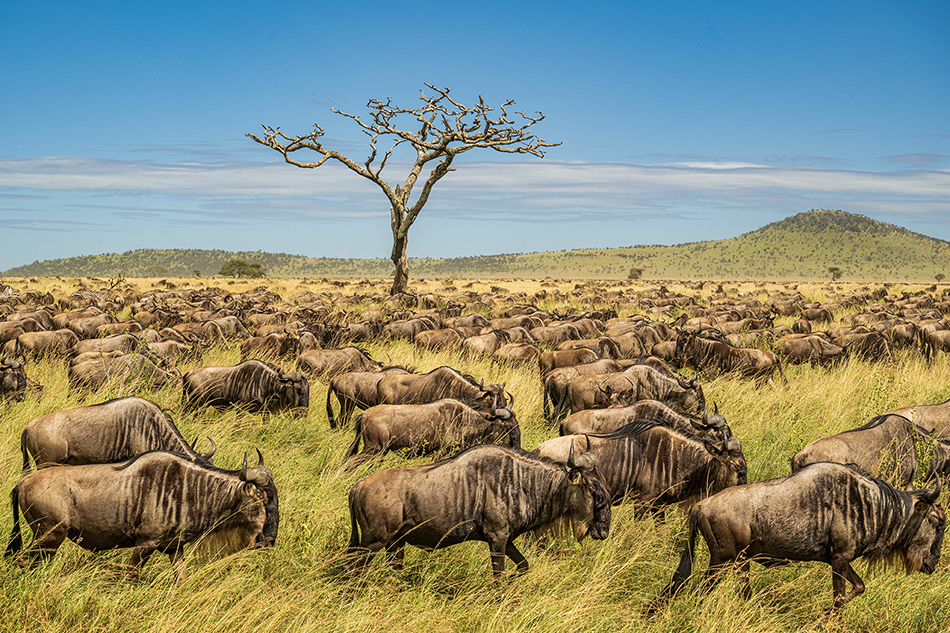
I have been on the road for the last two weeks in Tanzania teaching a workshop. I’ve been to Africa many times, but never have I seen the great migration as well as this trip. Thousands and thousands of migrating animals, and our vehicles were in the middle of it. These days it is harder to predict exactly where the migration is with varying weather patterns and drought, but we just got lucky!
As with any trip to Africa, dust is an issue. Safari involves many hours in vehicles searching for elusive cats or rare birds, and your gear takes a beating. I’ve seen screws rattle out of lenses after hours of bumpy, dusty road time. A question came up on our trip…do you use protective filters in situations like this? The answer will vary amongst photographers, but I used protective filters on my lenses this trip. Why? Because as much as I try to keep dust off my front lens element, it was so dirty at the end of the day I could write my name in the dust on the lens front. But since I had a front filter on, I just blew and scrubbed the dust off without worrying one bit about scratching the front element. We had a few cases where we were shooting warm sun backlighting animals, a situation where a protective filter can cause flare. In these cases I just took off the filter for this situations. I’ve scratched many front elements through the years in rough conditions, so I use front filters when things get nasty. For normal shooting, I don’t use front filters….portraits, travel, landscape…just depends on conditions.
What about those big 400 and 600mm lenses that don’t take front filters? In Africa we like to wrap our lenses/cameras in a kikoi, a piece of colorful cloth worn in many parts of Africa. Wrapping your gear in this cloth will keep the dust off. Some of our group used waterproof bags for the same purpose. If possible avoid changing lenses as much as possible. Bring two bodies so you can put your primary lenses on bodies ready to go. I used a 100-400mm on one Z9, and the 600mm F4 with built-in 1.4x on the other Z9. Identical bodies is also very helpful, same batteries, chargers, menus…keeps things simple.
How did the Z9s perform? Incredible! 50,000 images on this trip, 20,000 in Louisiana the week before, and three weeks ago 30,000 image photographing birds in Texas…100,000 images in just the last month. I’ve never shot a camera so hard, and the Z9 just keeps performing. Pre release capture has been critical in capturing birds in flight.
Our Z8 arrives tomorrow, stay tuned!